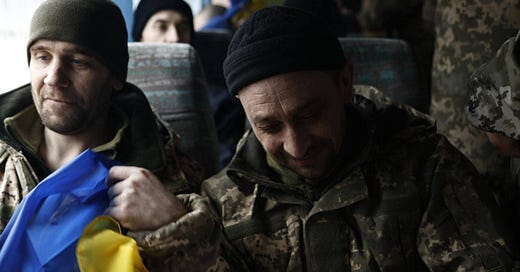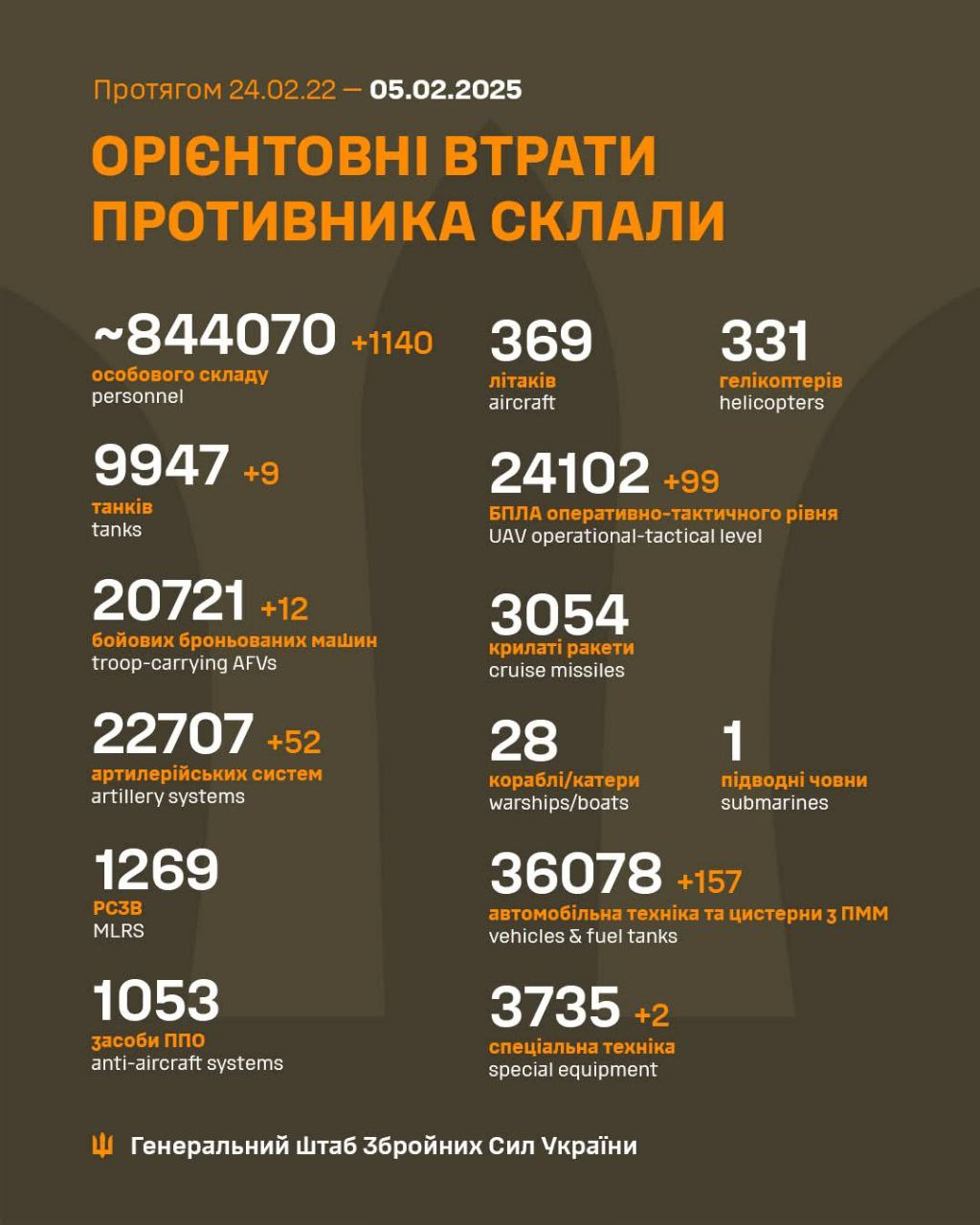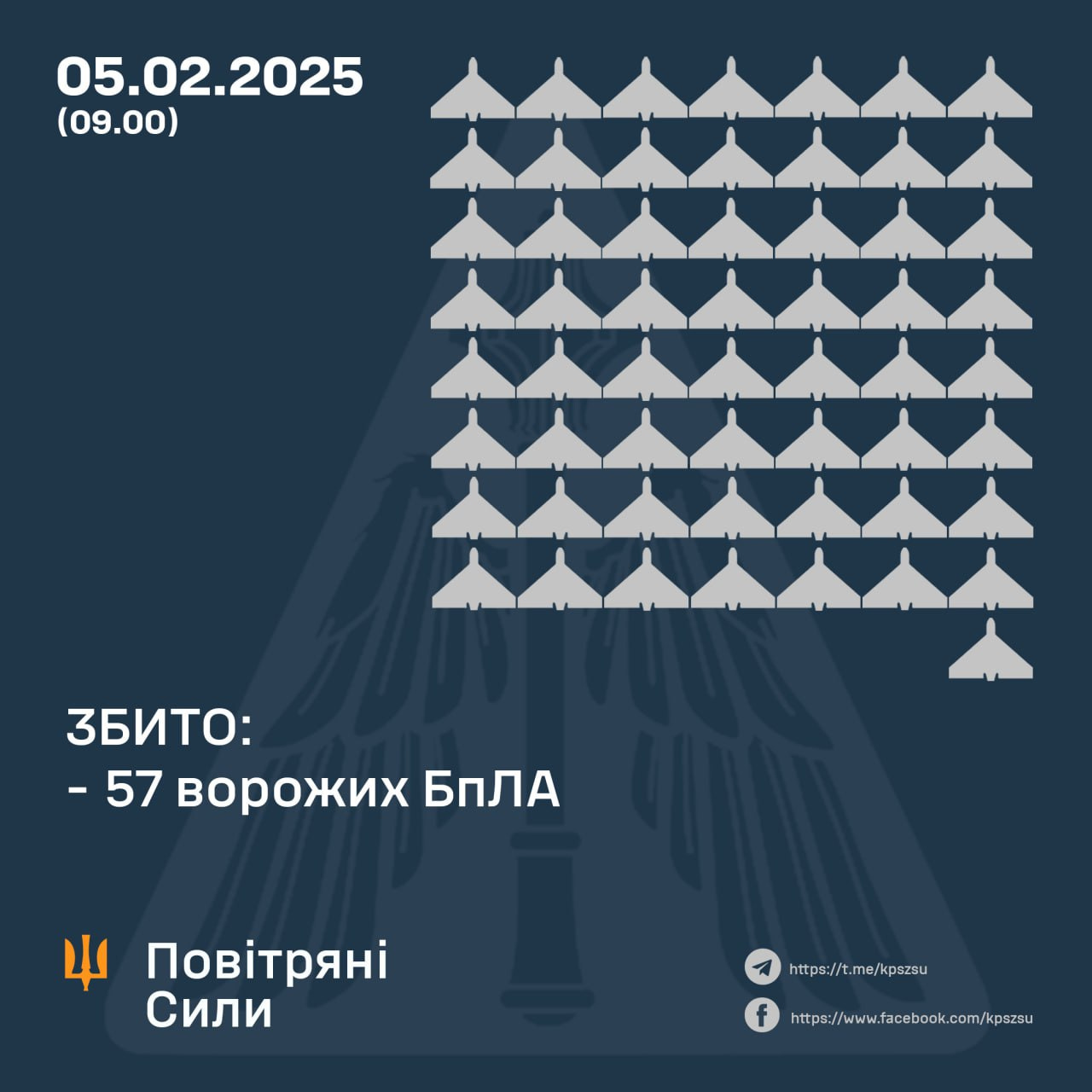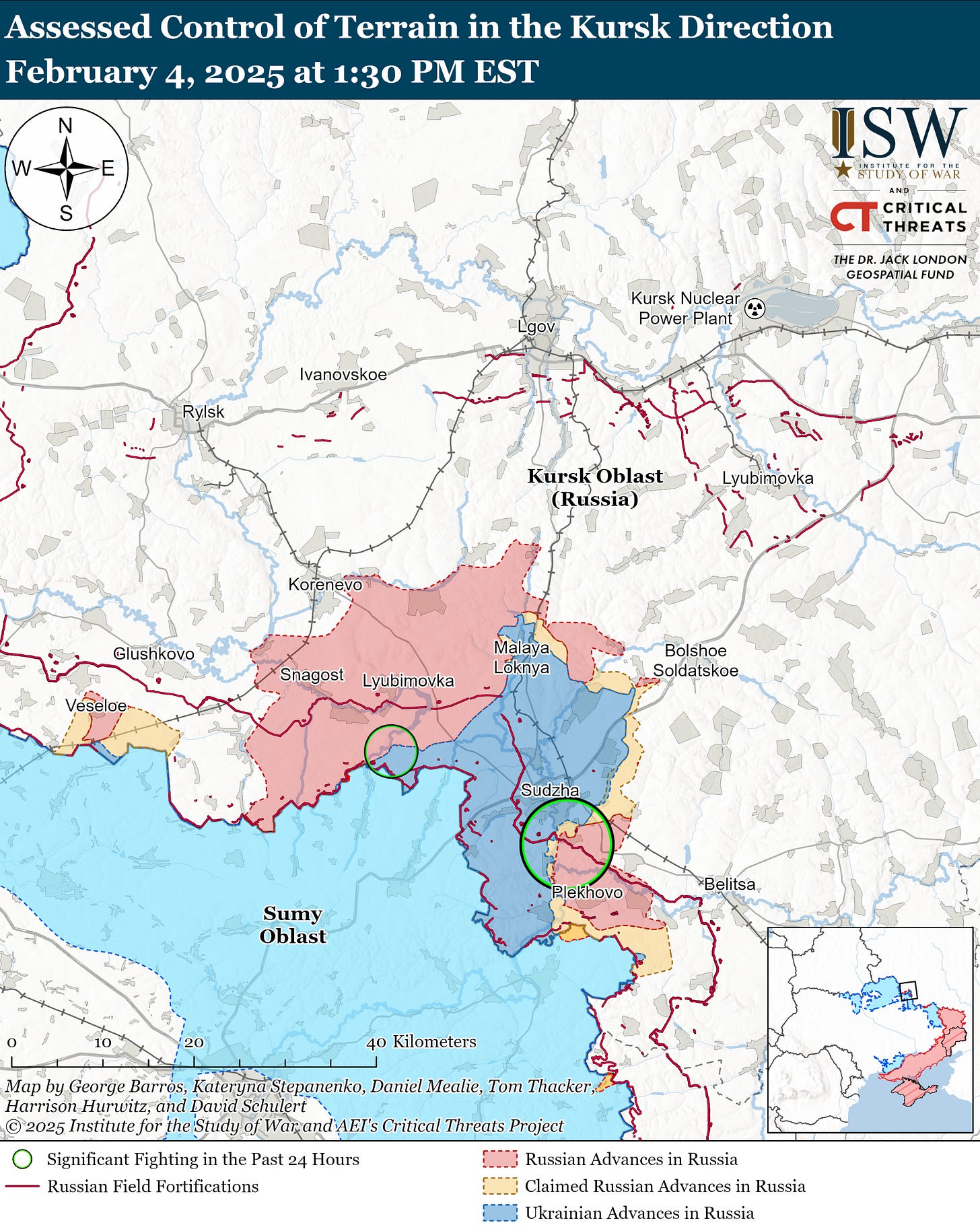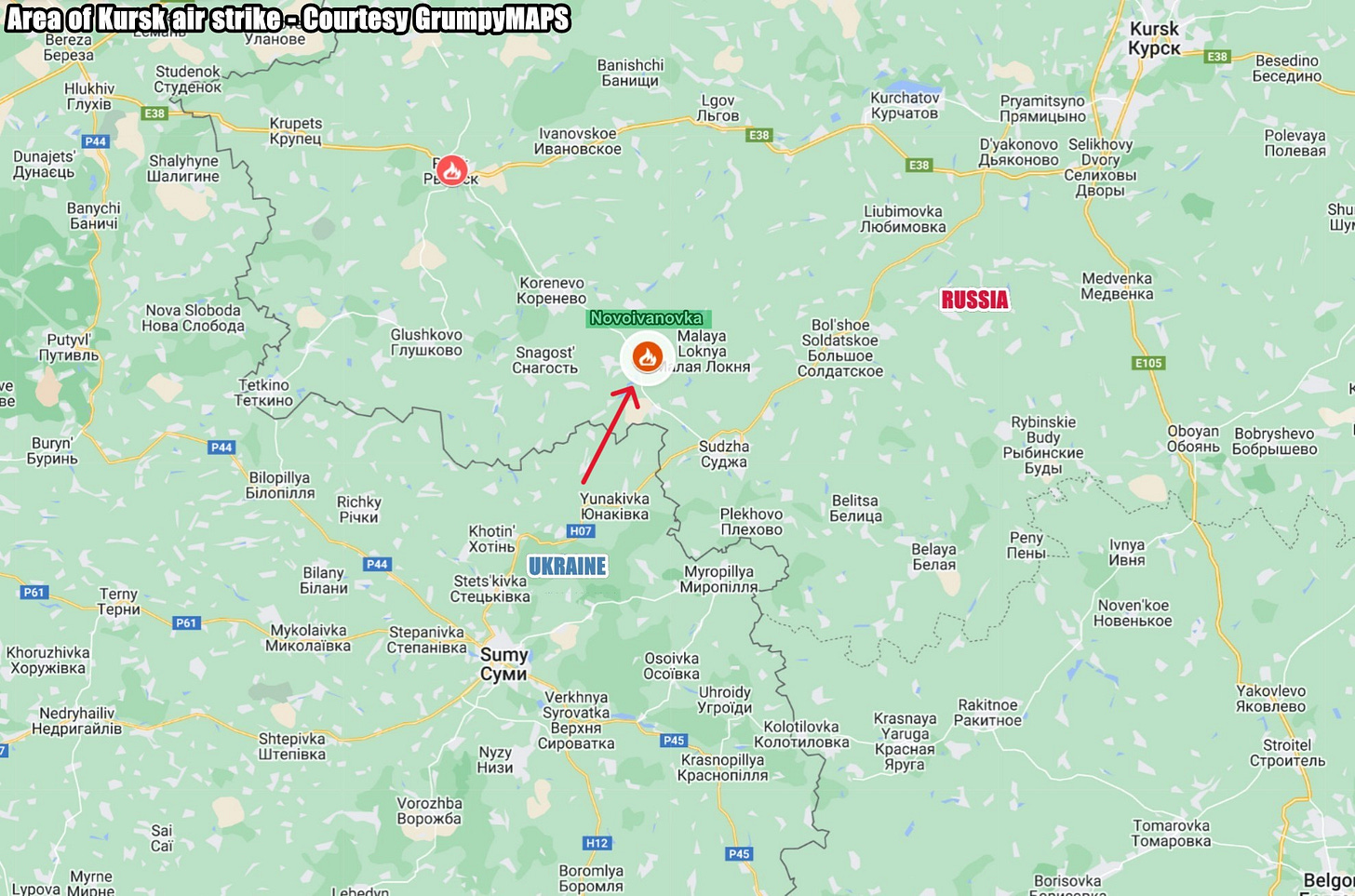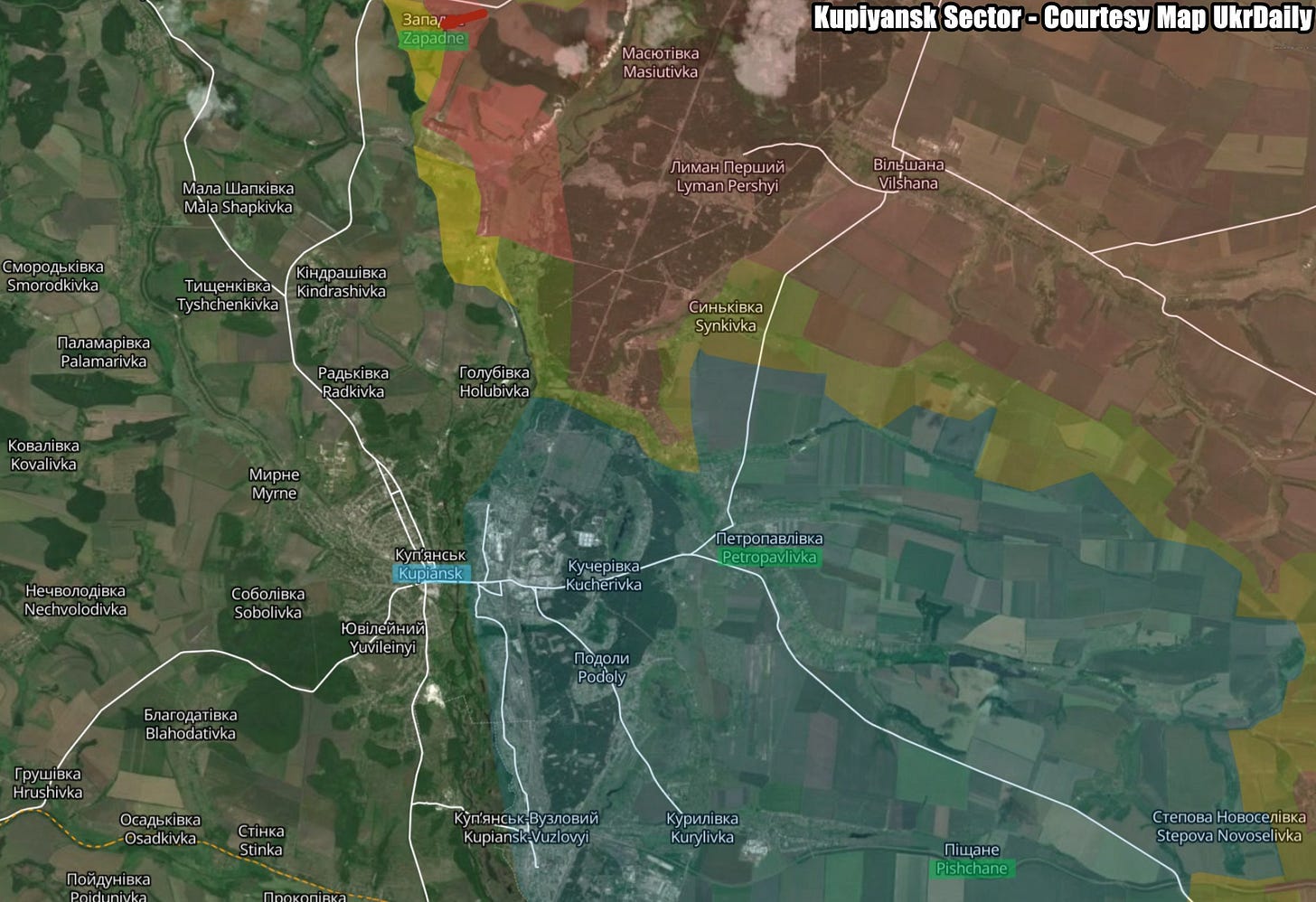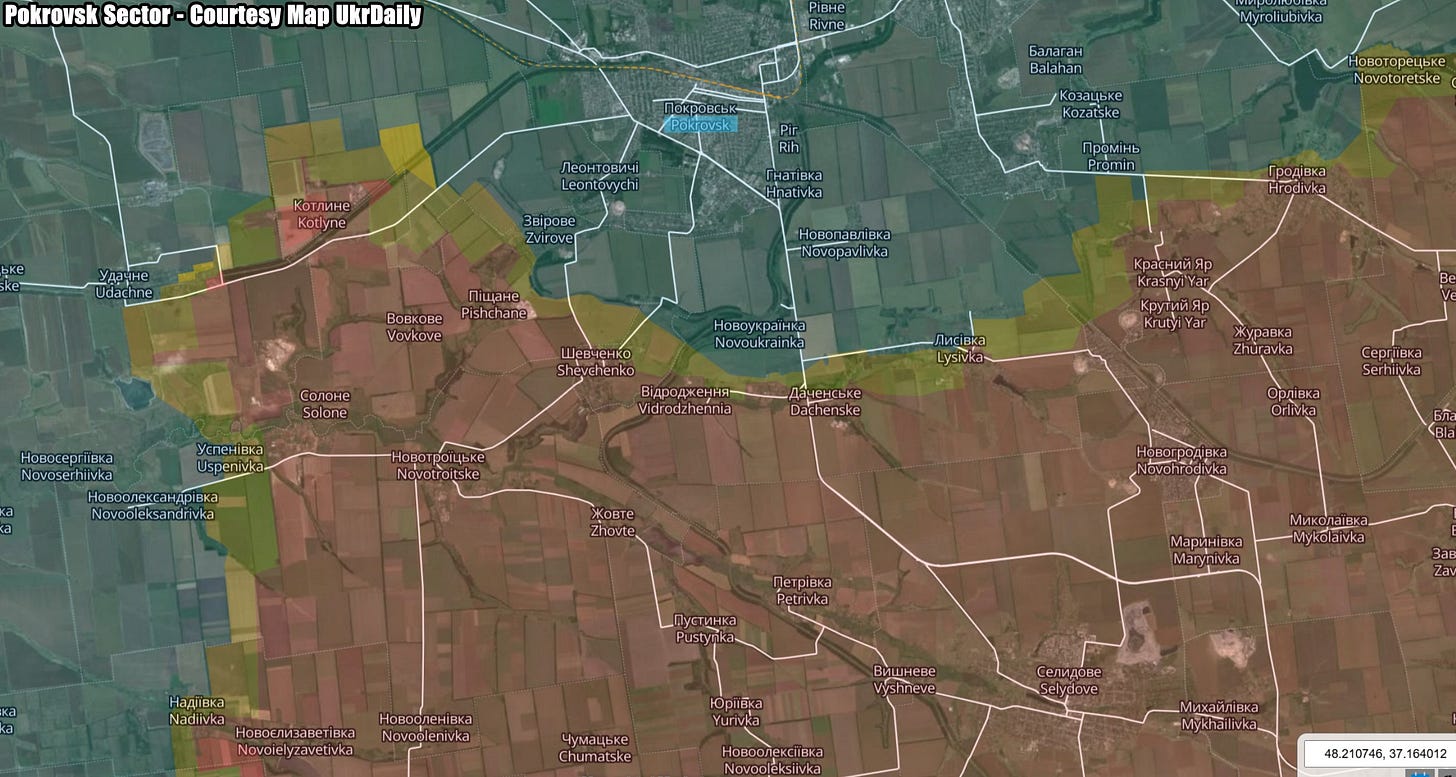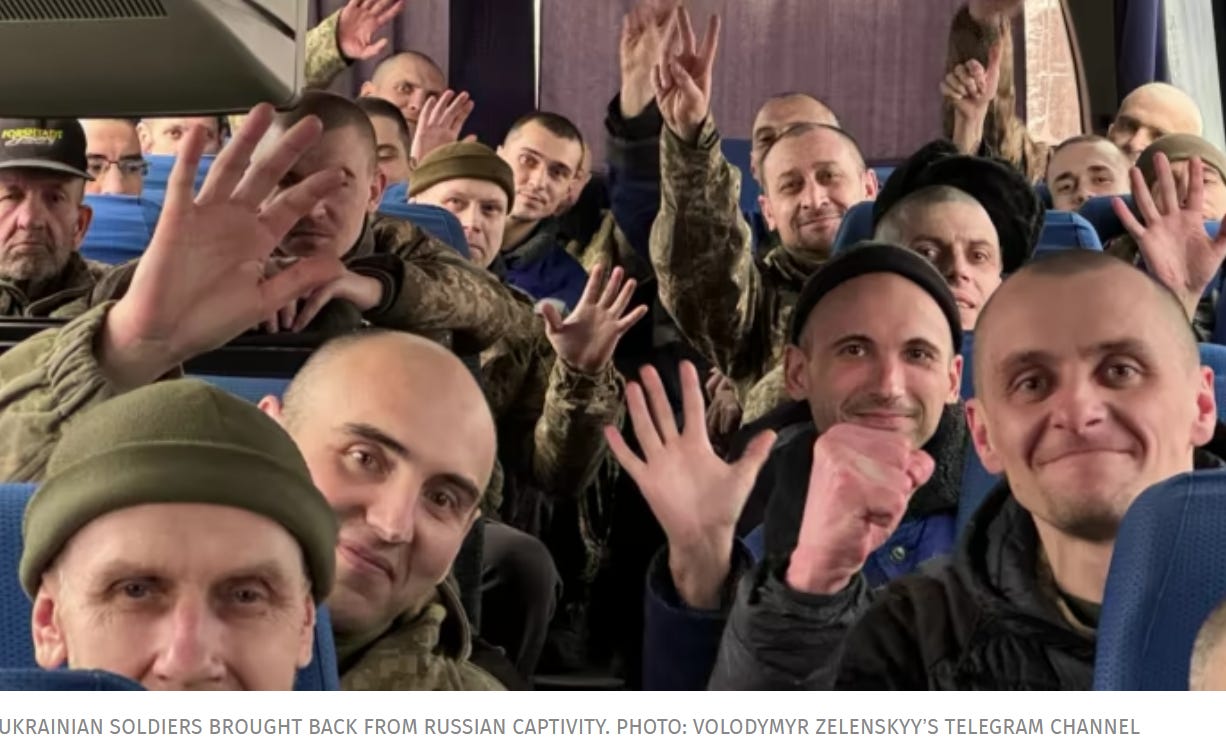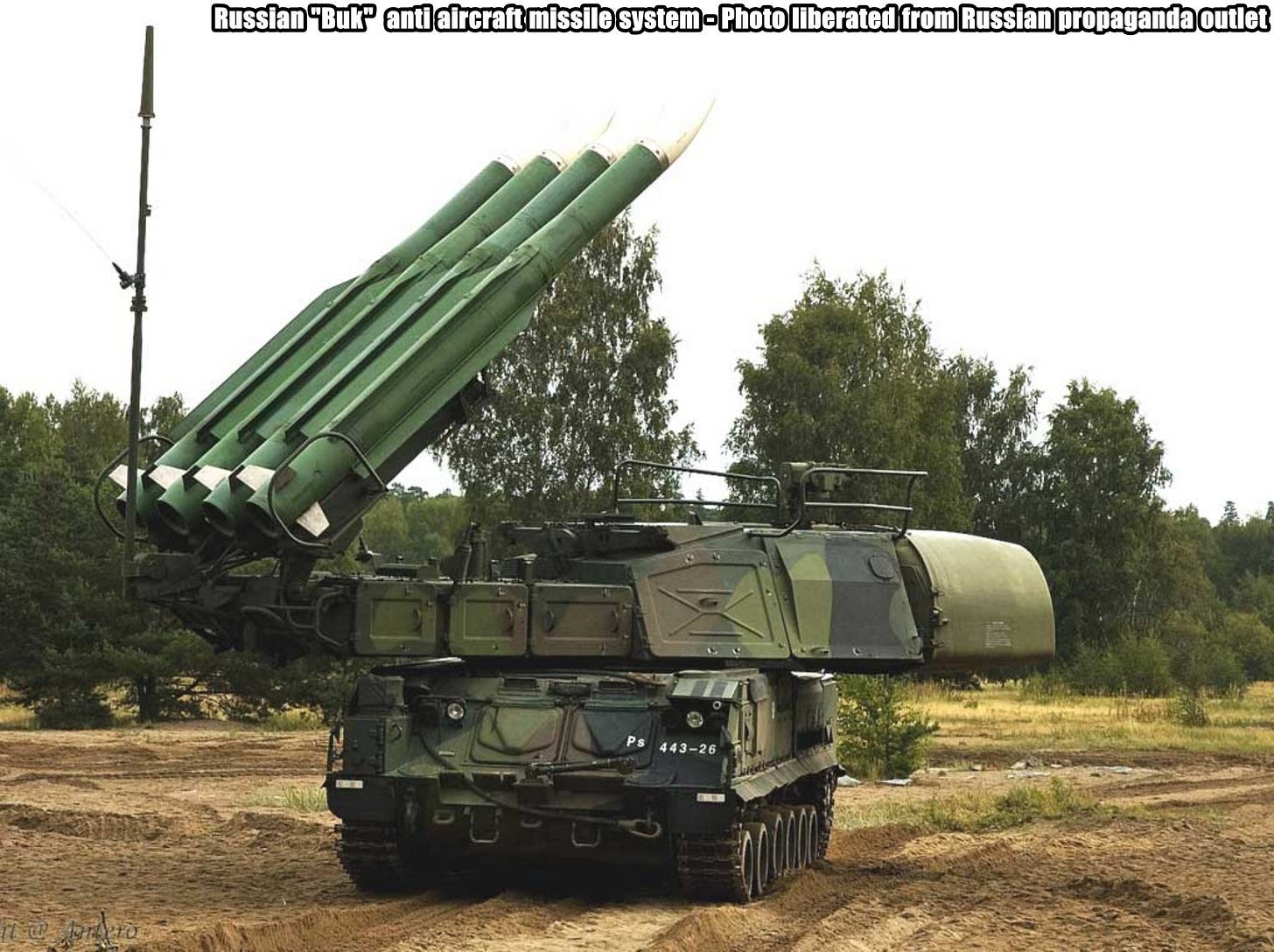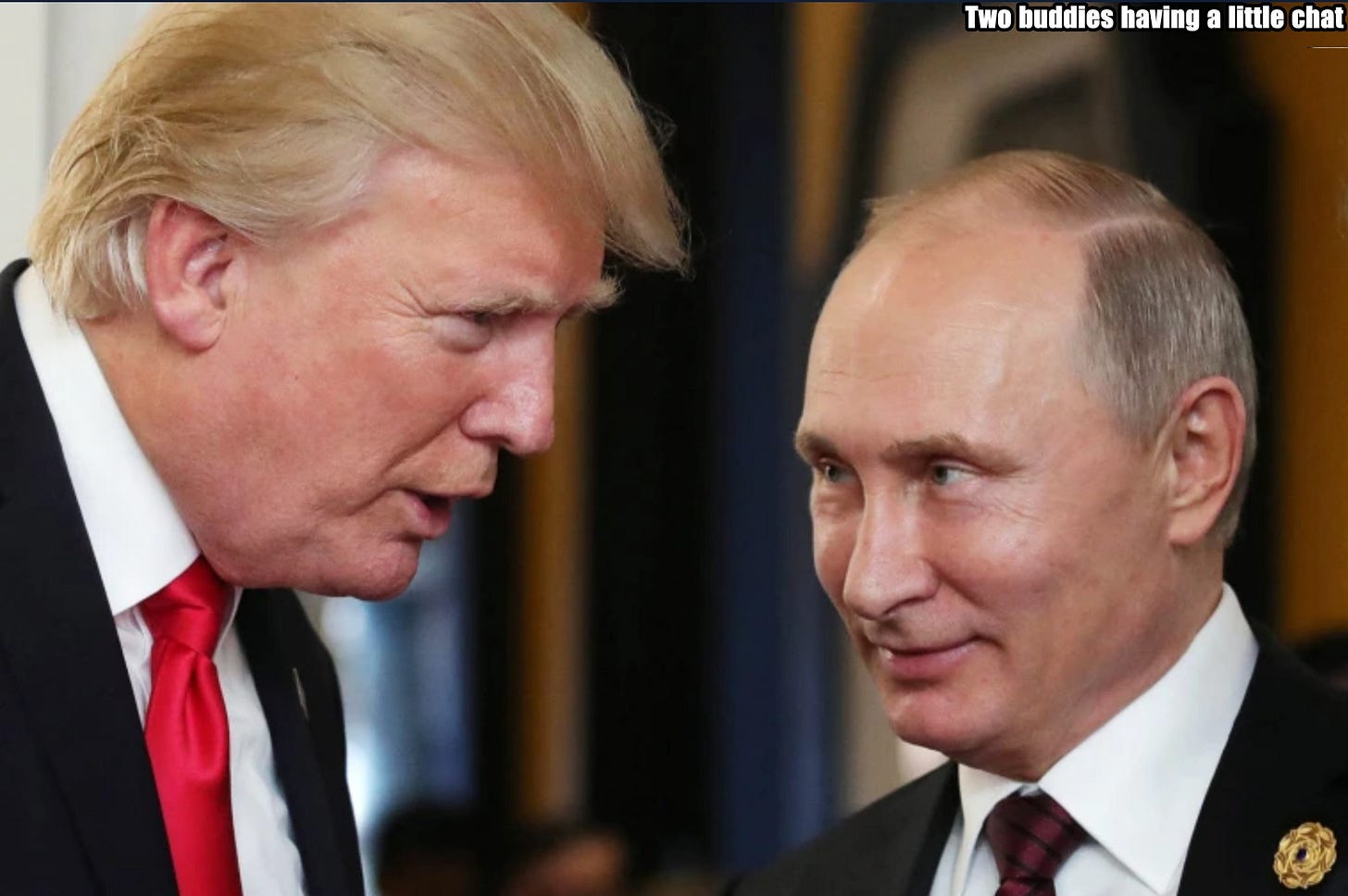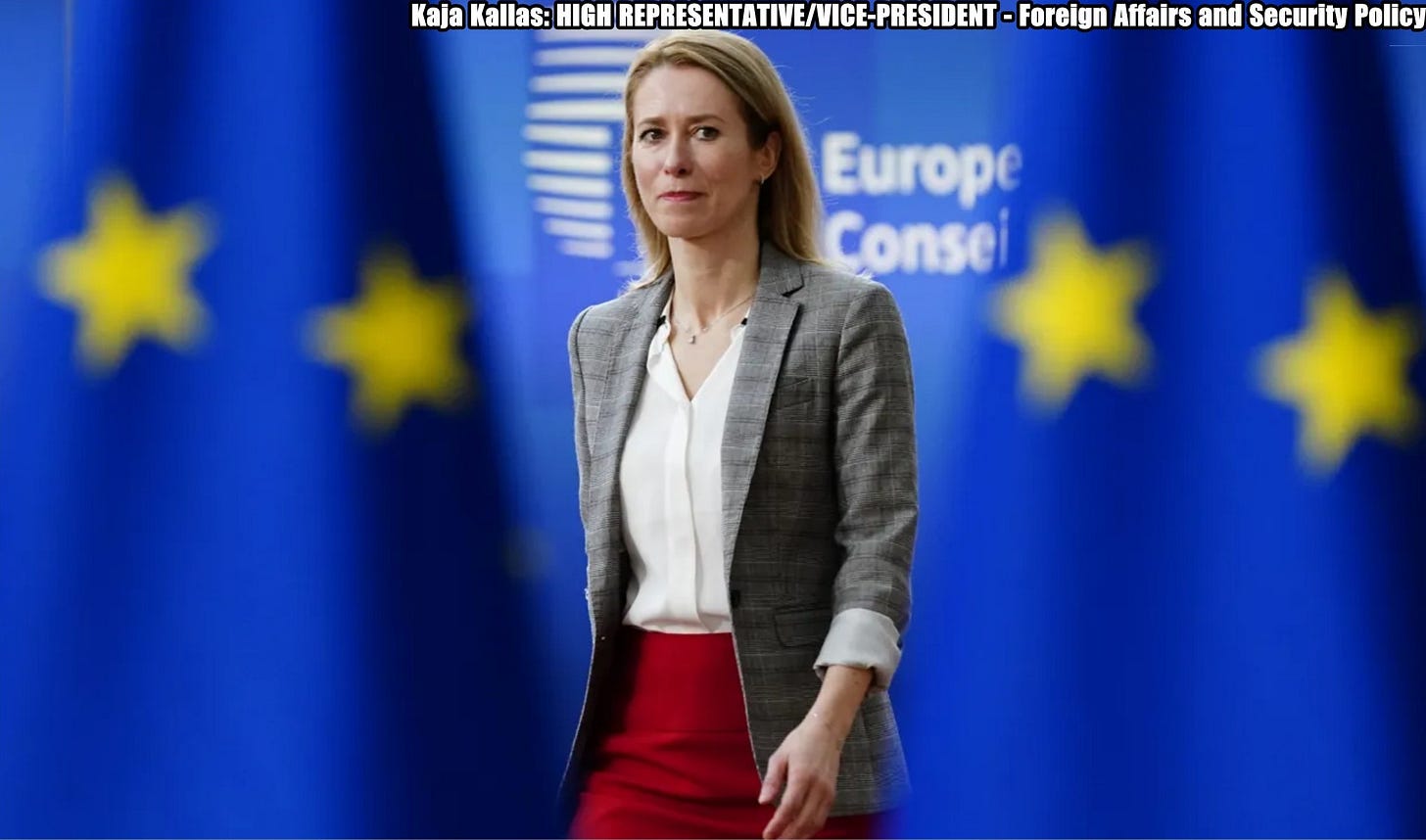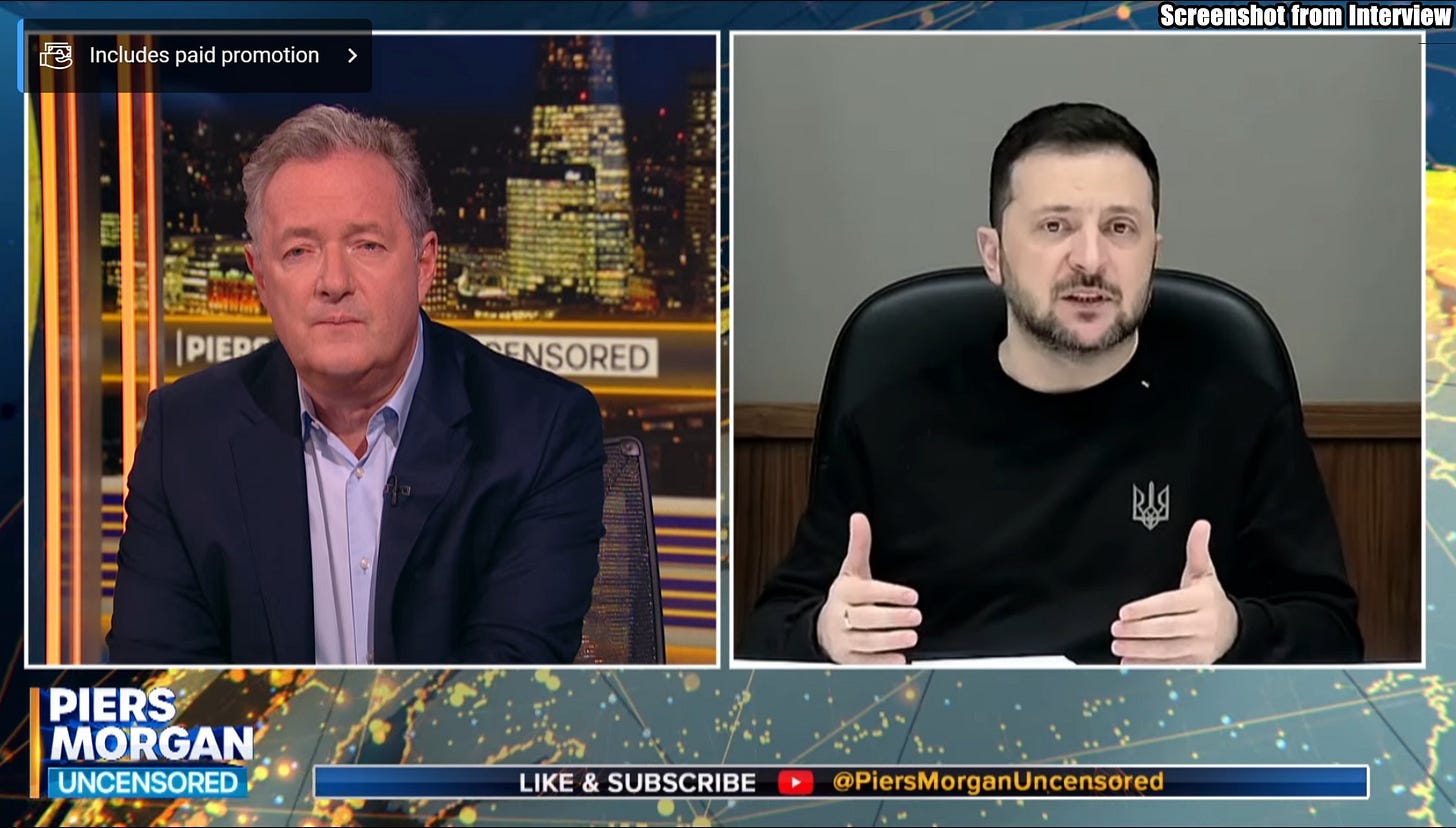Slava Ukraini! In early 2022 I began a Telegram channel aggregating news from a number of sources daily on the war in Ukraine. In June 2023 I began providing a daily draft for the Ukraine War Brief Podcast collecting news from over 70 sources daily, which formed the basis of the script. While the Podcast no longer exists I have continued to make this Brief available for my followers here on Substack for those who wish to keep up with the news from the war.
All the latest news on the Russo-Ukraine War 6 days per week
ALONG THE CONTACT LINE
GSAFU Morning Report
The General Staff of the Armed Forces of Ukraine in its Operational Information update at 08:00 on Feb 5 stated that day 1078 of the full-scale invasion of the Russian Federation against Ukraine had begun.
The situation on the line of combat remains tense in some sectors. Ukrainian defenders continue to actively counteract the Russian aggressor, causing them significant losses in personnel, equipment and technology. Exhausting the enemy along the entire front line and continuing to disrupt the plans of Russian occupiers to advance deeper into the territory of Ukraine.
During the past day, 85 combat engagements took place.
Over the past 24 hours, the enemy carried out 2 missile strikes, 76 air strikes, used 2,711 drones and fired approximately 5,300 artillery shells across the positions of Ukrainian forces and civilians.
Air Force Daily Report
57 ENEMY UAVS SHOT DOWN, 42 DRONES FAILED TO REACH THEIR TARGETS (LOCATIONALLY LOST)
➖➖➖➖➖➖➖➖➖
On the night of February 5, 2025 (from 20:00 on February 4), the enemy attacked with two Iskander-M ballistic missiles from the Kursk region and 104 Shahed attack UAVs and simulator drones of various types from the directions: Orel, Kursk, Bryansk, Primorsko-Akhtarsk - Russia.
The air attack was repelled by aviation, anti-aircraft missile troops, electronic warfare units, and mobile fire groups of the Air Force and Defense Forces of Ukraine.
As of 09:00, it was confirmed that 57 Shahed attack UAVs and drones of other types were shot down in Kharkiv, Poltava, Sumy, Kyiv, Cherkasy, Chernihiv, Zhytomyr, Khmelnytskyi, and Kirovohrad regions.
42 enemy drone simulators were lost in location (without negative consequences).
As a result of the enemy attack, the Kyiv, Kirovohrad, Sumy, Kharkiv, and Donetsk regions suffered.
Combat Operations in the Kursk Sector, Russian Federation
The Institute for the Study of War (ISW), a US based think tank, in its Feb 4 Russian Offensive Campaign Assessment reported that Russian forces continued ground attacks in the Ukrainian salient in Kursk Oblast on Feb 4 but did not make any confirmed advances. Russian forces continued attacks northwest of Sudzha near Sverdlikovo, north of Sudzha near Nikolayevka, and south of Sudzha near Makhnovka.
A Kremlin-affiliated Russian milblogger claimed that Russian forces are taking a "temporary operational pause" in the Kursk direction. The milblogger claimed that Russian forces' efforts to seize Makhnovka throughout Jan 2025 ceased due to a combination of Ukrainian drone operations and poor weather conditions and that Russian forces ultimately withdrew from the settlement. The milblogger assessed that fighting for Makhnovka will likely resume when the ground either freezes again or completely dries out. Another milblogger also claimed that Russian forces failed to secure a foothold near Makhnovka.
Ukraine's strike on Russian command center in Kursk Oblast causes 'significant losses,'
The Institute for the Study of War (ISW), a US based think tank, in its Feb 4 Russian Offensive Campaign Assessment reported that Ukraine's Air Force carried out a "precision strike" on Feb. 3 at a Russian command post near the village of Novoivanovka in Kursk Oblast, the Kyiv Independent reported citing General Staff of Ukraine's Armed Forces.
Kyiv launched a limited incursion into Russia's Kursk Oblast on Aug. 6, first capturing about 1,300 square kilometers (500 square miles) of Russian territory. While Ukraine has reportedly lost around half of that territory since then, fighting continues in the region.
The command post, located in an abandoned building, was used to coordinate Russian troops' offensive against the Ukrainian army in the Kursk sector of the front line, the statement read.
The building was severely damaged, and Moscow suffered significant losses among Russian personnel, the General Staff said.
Earlier on Jan. 31, Ukrainian forces struck another command post of Russia's Kursk group of forces in the Russian city of Rylsk.
These attacks are part of Ukraine's broader strategy to weaken Russian operational capabilities by targeting key command centers. The General Staff has emphasized that such strikes aim to reduce Russia's offensive potential.
The Khortytsia operational-strategic group
(Responsible for the northeastern part of Ukraine. )
Kupyansk Sector: Russian forces recently advanced in the Kupyansk direction amid continued offensive operations in the area on Feb 4. Russian forces conducted offensive operations east of Kupyansk near Petropavlivka and southeast of Kupyansk near Pishchane on Feb 3 and 4.
Assessed Russian advances: Geolocated footage published on Feb 4 indicates that Russian forces recently advanced in central Zapadne (north of Kupyansk).
The Tavria operational-strategic group
(Responsible for the central-eastern and southeastern part of Ukraine.)
Pokrovsk Sector : Russian forces continued offensive operations in the Pokrovsk direction on Feb 4 but did not make confirmed advances. A Ukrainian brigade published footage on Feb 4 showing Ukrainian forces repelling a platoon-sized Russian mechanized assault in the Pokrovsk direction.
Ukraine's Khortytsia Group of Forces Spokesperson Major Viktor Trehubov stated on Feb 4 that Russian forces rarely use armored vehicles in the Pokrovsk direction and prefer to use swift and maneuverable vehicles, including buggies and motorcycles.
The spokesperson of a Ukrainian brigade operating in the Pokrovsk direction similarly noted that Russian forces transport infantry for assaults using civilian cars and motorcycles. The spokesperson stated that Russian forces are launching dozens of FPV drones and conduct 10 to 20 small infantry assaults per day in the area but noted that the overall tempo of Russian offensive operations has decreased.
The Odesa operational-strategic group
(Responsible for Kherson, Qırım, (also known as Crimea) and the Black Sea.)
There have been no major changes to the combat environment since our last report.
TEMPORARILY OCCUPIED TERRITORIES
Nothing major to report.
THE HOME FRONT
Ukraine returns 150 soldiers from Russian captivity.
Ukraine has brought back 150 soldiers from Russian captivity on Wednesday, 5 February, Ukrainska Pravda reported citing President Volodymyr Zelenskyy on social media.
"Today is a good day for all of us. We are returning 150 of our defenders from Russian captivity. These are soldiers, sergeants, officers. Soldiers of the Navy, who were captured in Mariupol and Zaporizhzhia Oblast, the Air Force, the Air Assault and Ground Forces, the National Guard, border guards, Territorial defence forces and a police officer. All of them are from different frontline areas, but they have one thing in common: they fought for Ukraine.
Some guys had been in captivity for more than two years. And today is a day that means more to them and their families than years of waiting. It is a real happiness to see them at home, alive and free."
RUSSIAN WORLD
Ukrainian Drones strike Oil Depot in Southern Russia.
A Ukrainian drone attack in Russia’s southern Krasnodar region ignited a fire at an oil depot Wednesday, the Moscow Times reported citing the regional governor.
The attack targeted the village of Novominskaya, where debris from a downed drone fell on an oil reservoir, Krasnodar region Governor Veniamin Kondratyev claimed.
"A fire has broken out," Kondratyev wrote on Telegram, adding that 55 firefighters had been dispatched to the scene.
"No one has been wounded, according to initial information," he said, adding that the depot contained only "insignificant remnants of petroleum products."
The GSAFU announced Units of the Security Service of Ukraine, in interaction with the Armed Forces and other components of the Defense Forces, on the night of February 5, 2025, struck Albashneft LLC in the Krasnodar region of Russia.
This oil refinery and petroleum production plant is positioned as a "mini refinery" and is involved in supplying gasoline and diesel to the Russian occupation army.
Additionally units of the Armed Forces of Ukraine conducted combat operation on “Buk” Russian anti-aircraft missile complex, located in the temporarily occupied territory of the Zaporizhia region. A successful target hit and damage was recorded.
INTERNATIONAL NEWS
Trump's team split over how to end war in Ukraine.
The administration of U.S. President Donald Trump is split over how to end the war in Ukraine, NBC News reported on Feb. 5.
Citing U.S. and Ukrainian officials, the outlet said Trump's special envoy for Ukraine, General Keith Kellogg, and National Security Adviser Mike Waltz, are pushing for the White House to use its leverage over Russia to force Russian President Vladimir Putin to back down.
Without naming individuals, NBC News said others in the administration are in favor of withdrawing military support from Kyiv in order to hasten the end of the war, effectively forcing Ukraine to capitulate.
The U.S. does have significant leverage over Russia in economic, military, and diplomatic terms, but questions remain over its willingness to use it.
Russia’s economy is showing signs of weakness, making Putin more vulnerable than ever to additional economic pressure like sanctions.
Ramped-up support for Ukraine on the battlefield could add to Russia’s mounting losses and further incentivize dealmaking, as would uniting support among allies and squeezing Russia on the diplomatic stage.
President Volodymyr Zelenskyy has repeatedly ruled out any deal that would involve ceding territory to Russia, which currently occupies around 20% of Ukraine's territory.
Some of this land was taken during Russia’s 2014 invasion, while the rest was captured following its full-scale assault in 2022.
As Ukraine faces mounting battlefield losses, pressure is growing on Zelenskyy to consider compromises.
When asked about ceding land to Russia in exchange for peace during an interview with Fox News published Nov. 20, Zelenskyy said Ukraine "cannot legally acknowledge any occupied territory of Ukraine as Russian."
But he has acknowledged that some territories might be returned through diplomacy rather than military means. He also said on Dec. 1 that if Ukraine were to join NATO, the alliance's Article 5 collective defense principle may not apply to Ukrainian territories facing active combat.
Kellogg was officially appointed into his new role on Feb. 3.
"We made a lot of progress on Russia-Ukraine," Trump reportedly said after signing the decree without providing further details.
Kellogg has praised Trump's willingness to engage with Putin, calling former U.S. President Joe Biden's refusal to work with Putin a "biggest mistake."
Trump's envoy said he believes the new U.S. president can broker a satisfactory deal for both Putin and Zelenskyy.
Kellogg told Reuters on Feb. 1 that Ukraine's presidential and parliamentary elections, suspended since the full-scale war began, "need to be done." He argued that holding elections during wartime would strengthen Ukraine's democracy.
The Trump administration is debating whether to secure a temporary ceasefire before negotiating a permanent resolution, with the election winner potentially overseeing future talks with Moscow.
Kellogg also suggested using frozen Russian assets to purchase American weapons for Ukraine, as reported by Fox News on Jan. 24.
Zelenskyy recently emphasized the need to end the war diplomatically in 2025, suggesting that a Trump administration could accelerate the process.
EU hails 'major' progress on plan to set up special tribunal to judge Vladimir Putin
A coalition of 38 countries, including all EU members, announced on Feb. 4 that they had made "significant progress" toward establishing a special tribunal to prosecute Russian leadership for the crime of aggression against Ukraine, Euronews reported.
"No one from Russia and no one from Russia's leadership is untouchable," said Kaja Kallas, the EU's top diplomat.
The tribunal, set to operate within the Council of Europe, will focus on Russia's political and military leaders, including President Vladimir Putin.
"To wait is not an option. We must really act as fast as possible. And we will do the best way to try to finish the work this year," said Council of Europe Secretary General Alain Berset.
Legal experts are reportedly drafting a statute to define the tribunal's jurisdiction, with the document expected to be signed in April at the 14th meeting of the coalition participants.
Ukrainian President Volodymyr Zelenskyy has been a strong advocate for the tribunal, seeking to hold Putin accountable for launching the full-scale invasion nearly three years ago.
Ukrainian authorities have documented thousands of war crimes by Russian forces, including deliberate attacks on civilians, cultural sites, and medical institutions, as well as cases of torture and forced deportations.
The International Criminal Court (ICC) has already issued arrest warrants for Putin and Maria Lvova-Belova, the Russian official overseeing the forced deportation of Ukrainian children to Russia.
In March 2024, the ICC also issued warrants for two Russian military commanders for strikes on Ukraine's energy infrastructure during the winter of 2022-2023.
Unlike war crimes, crimes against humanity, and genocide — charges that apply to individuals at all levels of a military conflict — the crime of aggression is a charge that can be brought exclusively against the top leadership of an aggressor state.
US provides 30% of Ukraine's weapons, domestic production covers 40%, Zelenskyy says.
Around 40% of the weapons and equipment Ukraine uses on the battlefield are Ukrainian-made, while the U.S. contributes roughly 30%, President Volodymyr Zelensky told U.K. journalist Piers Morgan in an interview published on Feb. 4.
"This does not bring tranquility but rather a moral belief that we will not be left empty-handed, of course, without the support of the United States," Zelensky said. The president nevertheless hinted at serious consequences should Washington decide to withdraw assistance.
"The contribution from the United States to Ukraine's defensive capability and security is now around 30%. You can imagine what would happen to us without this crucial 30%," Zelensky said amid uncertainty about the Trump administration's continued support.
The U.S. is Ukraine's largest military aid provider, supplying billions in security assistance since Russia's full-scale invasion. President Donald Trump's administration has been evasive about whether the new president plans to cut support after taking office.
Aiming to reduce its reliance on foreign support, Ukraine has ramped up its domestic defense production over the past years. The country's 2025 budget allocated Hr 55 billion ($1.3 billion) for weapons production.
Zelensky emphasized that continued assistance from partners remains critical and warned that any disruption in U.S. military aid could have dire consequences.
"Unfortunately, some delays occurred, but they eventually arrived, which allowed us to continue supporting our army, our Defense Forces, and... to defend against Russia," the president said.
U.S. support to Kyiv has faced delays due to opposition from congressional Republicans and concerns within President Joe Biden's administration about escalating the conflict.
A major obstacle in 2023-2024 was a $60 billion aid package caught in congressional gridlock, further complicated by a flawed weapons-tracking system that created confusion over the actual aid delivery.
MILITARY & TECH
Some Western defense firms block website access for Ukraine.
A growing number of Western defense companies have restricted access to their websites for users in Ukraine, citing compliance with international sanctions and regulatory requirements. Defence Blog reports.
Among the firms that have implemented these measures are British Supacat, Spanish Navantia, General Dynamics European Land Systems, and American companies Insitu, HII, and Teledyne FLIR. Ukrainian users attempting to visit these websites are met with 403 access denied errors, indicating an outright ban.
Teledyne FLIR, a leading U.S. manufacturer of infrared imaging and surveillance technology, justified its decision by pointing to sanctions imposed on Russia. The company stated that due to parts of Ukraine being under Russian occupation, its system blocked access to the entire country to ensure compliance with export restrictions.
Teledyne FLIR suggested that Ukrainian users bypass the restriction by using VPN services, a workaround that has frustrated many in Ukraine’s defense and security sectors.
In contrast, major U.S. defense contractors such as Northrop Grumman, Lockheed Martin, Boeing, Raytheon, and BAE Systems continue to provide unrestricted access to Ukrainian users. These companies have not implemented similar blocks, allowing military officials, researchers, and analysts in Ukraine to access critical information about defense systems and technologies.
The information blackout comes at a time when Ukraine is engaged in a prolonged war with Russia, relying heavily on Western military assistance and intelligence-sharing.
While some companies argue that blocking Ukrainian access is an unintended consequence of broad compliance measures, critics see it as an overreach. The inconsistency in access policies among defense firms highlights the complexity of international regulations and the unintended effects they can have on U.S. allies actively engaged in war.
Number of Russian assaults decrease for the seventh day in a row – DeepState.
The Deep State analytical project, citing the General Staff of the Armed Forces of Ukraine, has reported that Russian troops have been reducing the intensity of their assaults for seven days in a row.
On 5 February, the General Staff reported that 85 combat engagements occurred on the line of contact over the past day. The Russians attacked the Pokrovsk, Kupiansk and Toretsk fronts most often. At its peak in December, this figure reached 292 in a single day.
"The data published by the General Staff of the Armed Forces of Ukraine shows that the enemy has been reducing the intensity of attacks for seven days. For example, yesterday there were 85 attacks, compared to 292 attacks at the peak in December."
The situation by month is as follows:
November – 5205 attacks (an average of 173.5 per day);
December – 6247 attacks (201.5 per day);
January – 5087 attacks (164 per day);
First 4 days of February – 381 attacks (95 per day).
Ukraine’s FPV “air defenses” slash Russian drone reconnaissance capabilities.
In a revealing interview with Radio Liberty’s Donbas Realities project, Commander of Ukraine’s Unmanned Systems Forces (USF) Vadym Sukharevsky highlighted significant achievements in drone warfare, noting that Russian reconnaissance drone activity has decreased “by dozens of times” compared to previous levels.
The transformation has been particularly striking in tactical situations. Sukharevsky recalled that in the past, specifically in the Kherson direction, Russian forces could deploy up to 40 fixed-wing drones simultaneously within a 50×50 kilometer area. In 2022, the presence of seven Orlan drones supporting Russian artillery divisions could effectively paralyze Ukrainian movements for up to 11 hours. Now, according to Sukharevsky, such numbers are no longer seen, with Ukrainian forces are actively hunting and eliminating Russian reconnaissance drones as they appear.
The USF has demonstrated impressive reach into Russian territory. Sukharevsky revealed that Ukrainian forces have conducted over 220 deep strike operations inside Russia in 2024 alone, launching more than 3,500 unmanned systems. Their confirmed operational range now extends to 2,000 kilometers, marking a significant strategic capability.
The commander noted that in 2025, Ukraine will meet the target set by President Zelenskyy to increase the intensity of deep strikes into Russian territory dramatically.
Other notable achievements include an increased range of Ukrainian drones striking enemy targets on the frontline.
For example, the “Baba Yaga” drone bomber successfully struck a Russian Buk-M3 air defense system 57 kilometers behind enemy lines. The Nemesis UAV regiment destroyed more than 15 expensive air defense systems, including Buk-M3 and Tor complexes, in just two months. FPV drones successfully engage targets up to 34 kilometers behind enemy lines.
The commander also addressed current challenges, including the threat of fiber optic-guided FPV drones, noting that Ukrainian forces have identified several types of possible countermeasures against these drones, which he didn’t specify. He also emphasized the need for diplomatic efforts to restrict Russia’s access to optical fiber components.
While acknowledging the current difficulties, particularly around Pokrovsk, Sukharevsky maintains a resolute stance on Ukraine’s position as a “fortpost between good and evil, between civilization and barbarism.“ He stressed that while Ukraine has already achieved a strategic victory by maintaining its independence despite initial Russian objectives, the war requires continued national mobilization and support across all sectors of society.
The dramatic reduction in Russian reconnaissance drone activities and the increase in effective Ukraine’s strikes on Russian soil represent a tangible strategic success.
That’s it for today’s Brief folks if you would like to keep up with events in Ukraine daily please consider subscribing, it’s free!


